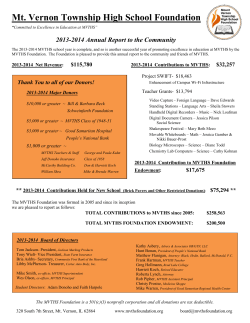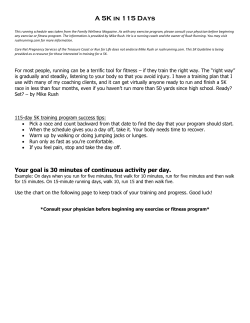
Guide to Problem Solving
Guide to Problem Solving Contents When to use problem solving methods The problem solving process Clarify the problem Identify solutions Assess solutions Use MECE Use SIP Helpful hints When you get stuck Further assistance 2 When to use problem solving methods Problem solving methods can be used for: • developing a solution definition based on the business requirements. • resolving issues. • treating risks. • general problem solving. 3 The problem solving process Three simple steps: 1. Clarify the problem. 2. Identify a number of possible solutions. 3. Assess possible solutions to determine the most suitable. 4 Step 1 - Clarify the problem • Write down a statement of the problem. • Is the stated problem clear and precise? If not refine the statement. • Is this merely a symptom of an underlying problem? • Can this problem be split into separate smaller problems? • Are there better ways of stating the problem? • What assumptions are inherent in the problem? 5 Step 2 - Identify solutions • Use a technique such as brainstorming to generate possible solutions. • Identify as many potential solutions as possible. • Do not filter out potential solutions, keep an open mind until you see how they will work. • Once you have generated lots of ideas, consider each one to see how it could be refined to solve the problem. 6 Step 3 - Assess solutions • Shortlist your potential solutions to those that are feasible. • Assess what the value of the problem is? What would it be worth to fix or what would it cost if it was not fixed? • Determine the criteria to be used to assess the solution. Factors to consider are: the requirements, short term vs. long term solutions, costs of the solution relative to the cost of the problem, etc. • If some cirteria are more important than others apply weightings to the criteria accordingly. • Determine the impact of the solutions being considered on other areas of the business. Consider the bigger picture. Is a similar problem being addressed elsewhere? • Assess the level of risk in the proposed solutions. Is fixing this problem likely to cause other problems? • Assess how well each solution meets the criteria and based on the weighting determine an overall score for each solution to select the best fit.. 7 Use MECE* MECE stands for Mutually Exclusive and Collectively Exhaustive. The MECE approach can be applied both in clarifying the problem by listing the issues, and in developing a list of alternative solutions. When producing a list make sure: • each item is a separate and distinct item – it is Mutually Exclusive. • All items have been identified – it is Collectively Exhaustive. Source: Ethan M. Rasiel, The McKinsey way, McGraw Hill, 1999 8 Use SIP SIP stands for Situation Implication Proposal. The SIP approach is another way of working through a problem. With SIP ask: • What is the Situation we are dealing with? - describe this in detail. • What are the Implications of the situation what effect is this having? • What is Proposed to address this? 9 Helpful hints Don’t: Do: – Make assumptions – Clearly state the problem – Jump to conclusions – Identify several solutions – Promote one solution without evaluation – Assess potential solutions based on real or agreed requirements – Allow only the technical people to propose solutions – Ensure that business users accept the proposed solution – Attempt to solve the problem in isolation – Consider the big picture and the context 10 When you get stuck The “cleaner” technique for solving problems. It’s late at night and Mike has been trying to work out why his computer program is not working and he is really stuck. Into the office wanders the cleaner, with his vacuum pack on his back and starts dusting. Mike calls him over. “Hey Joe, help me with this computer problem I am having.” Joe replies “I don’t know anything about computers!” “That’s fine, just listen” says Mike. As Mike explains the problem to the cleaner he suddenly realises what is causing the problem… “Thanks for your help Joe” says Mike. “ It’s nothing.” says Joe honestly. So, what happened? Just by explaining the problem to someone else the answer can reveal itself! If all else fails, sleep on it. 11 Further assistance For additional supporting guides see: Guide to Brainstorming Solution Definition 12
© Copyright 2025





















